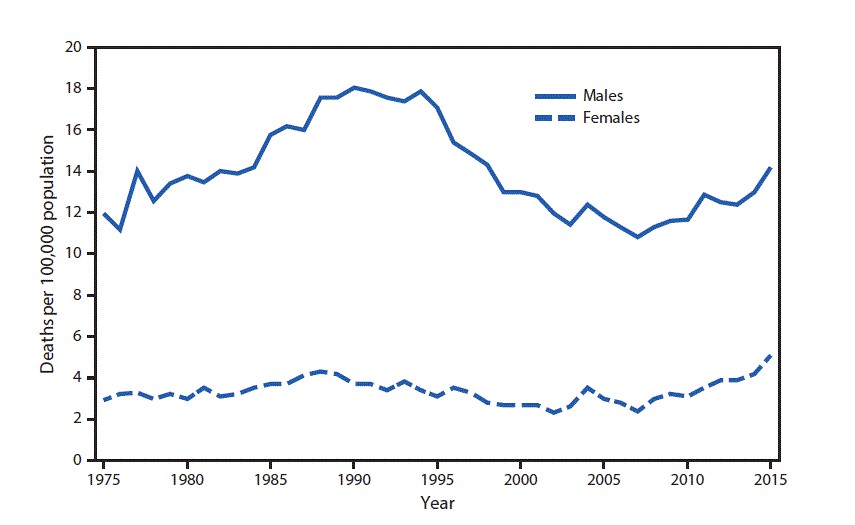by ALEXANDRA OSSOLA
 PHOTO/Ben White on Unsplash
PHOTO/Ben White on Unsplash
Here are some experts’ theories.
In 2015, suicides among adolescents ages 15 to 19 hit their highest number in decades, according to a report released earlier this month by the Center for Disease Control and Prevention (CDC).
The report, compiled from death certificates all over the country, shows some disturbing trends. In 2015, the last year in the report, the suicide rate for girls ages 15 to 19 reached its highest number since 1975. When looking only at the years between 2007 and 2015, the rate more than doubled in girls, rising from 2.4 to 5.1 per 100,000 people. In that same timeframe, the rate of suicides among boys increased by 31 percent from 10.8 to 14.2 per 100,000. (Rates have always been higher for boys; as you can see the rate for boys in 2015 was nearly triple the number for girls.)
 Suicide rates for teens aged 15–19 years, by sex — United States, 1975–2015 IMAGE/CDC.gov
Suicide rates for teens aged 15–19 years, by sex — United States, 1975–2015 IMAGE/CDC.gov
The researchers were, unfortunately, not surprised by what they found. “We’ve been trying to raise awareness about increasing suicide rates for a while now,” Thomas Simon, the CDC’s associate director for science in the division of violence prevention, says. The agency releases reports every week, and sometimes others like this one that can reveal a trend. “We’ve been seeing an increase [in suicide] overall in the US since 2000,” he adds; some of the earlier reports were about suicide rates among middle-aged adults.
“These high rates are unacceptable—they’re going in the wrong direction,” Simon says. “It’s a real public health problem.” While the number of suicides is arguably small—1,537 among males 15 to 19 and 524 among females that age—even one is too many.
The question, of course, is: why? What’s driving this disturbing trend? “It’s important to let readers know that multiple factors contribute to risk for suicide. It’s not the result of any one thing—it’s the result of many things,” Simon says. Many of these factors play out individually, such as substance abuse, issues in school or at work, legal problems, or relationship issues.
Still, there are some other trends on the national and community level that may be playing a role. One may be the 2008 recession. “We and others have done research that shows a strong association between cyclic patterns with the economy and suicide rates—they are higher during economic turmoil,” Simon says.
Economic fluctuation might not directly affect teens, but it could affect the people who care for them, says Suniya Luthar, a psychology professor at Arizona State University who has studied the factors behind suicide, especially among upper-middle class adolescents. “If we as adults are living in a state of apprehension, this does filter through. We can’t be as reassuring or steadying a presence [for teens],” she says.
Vice for more